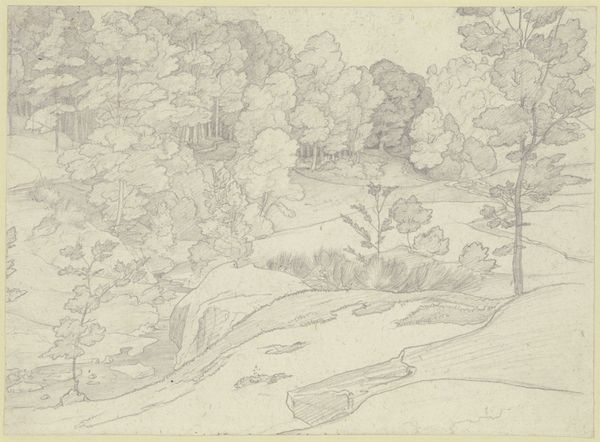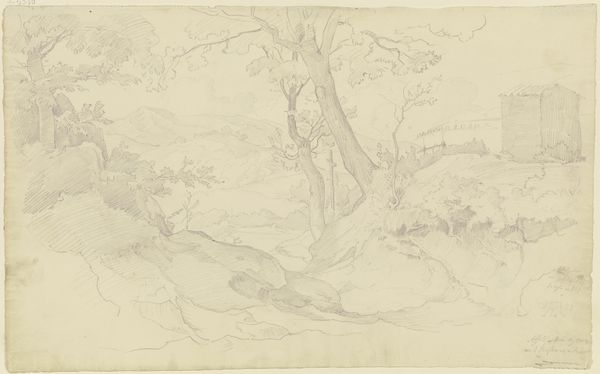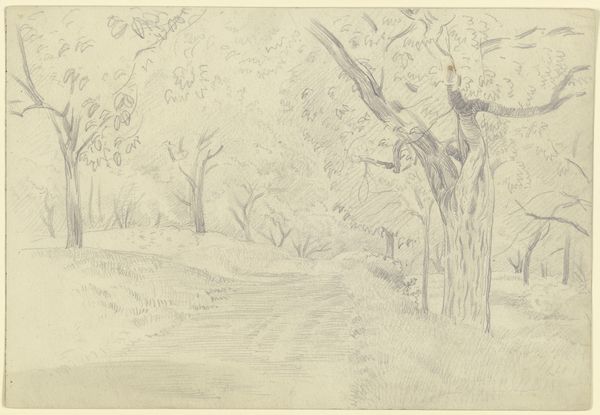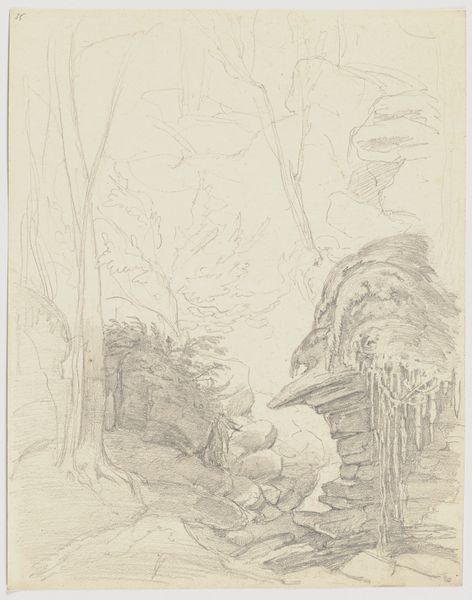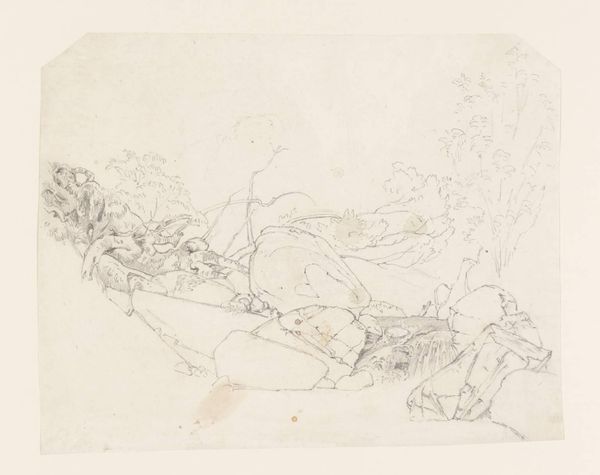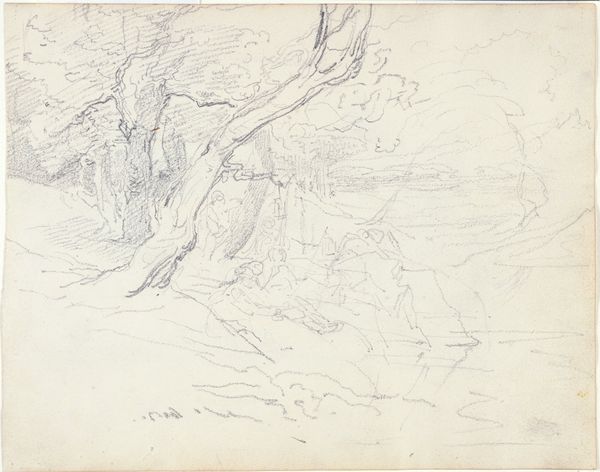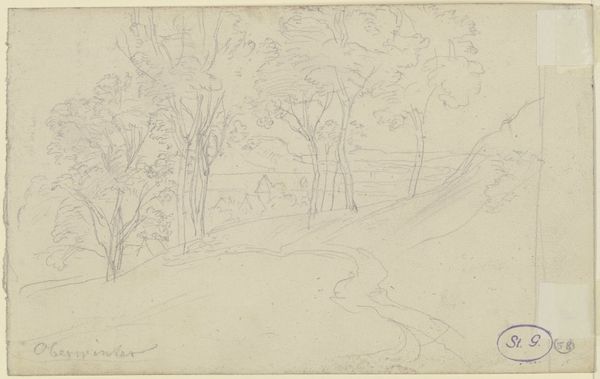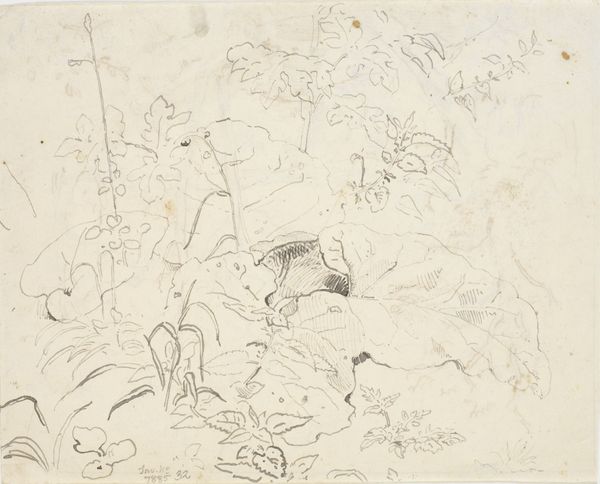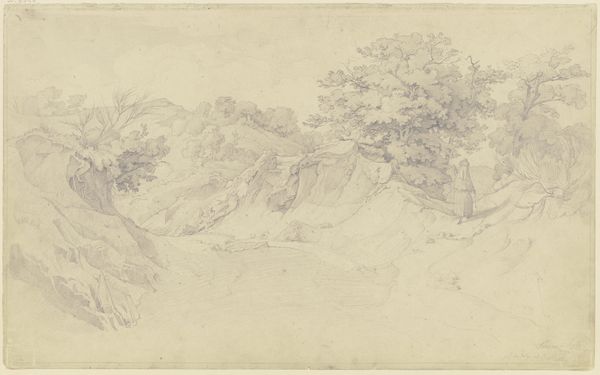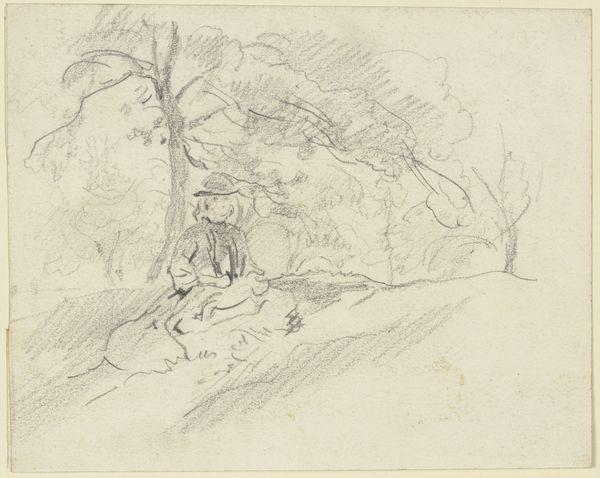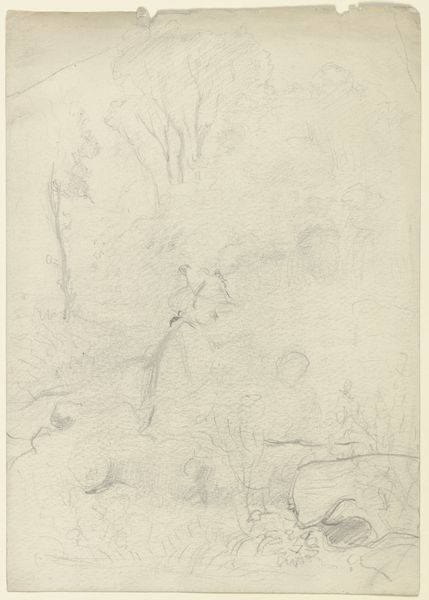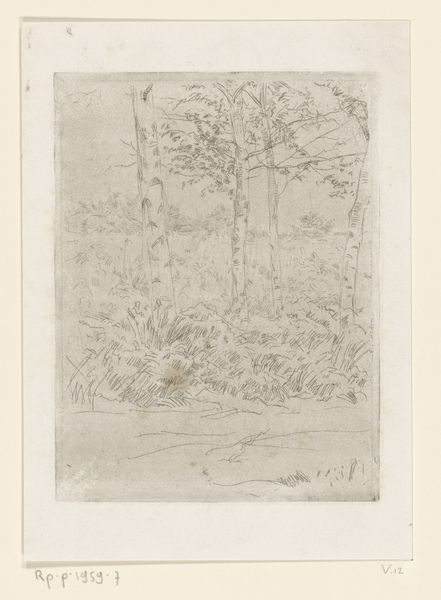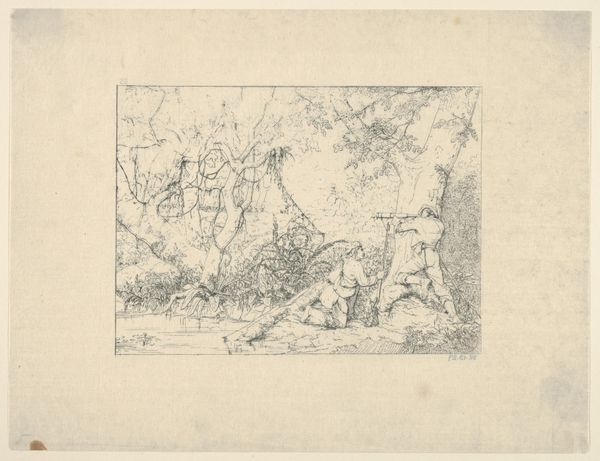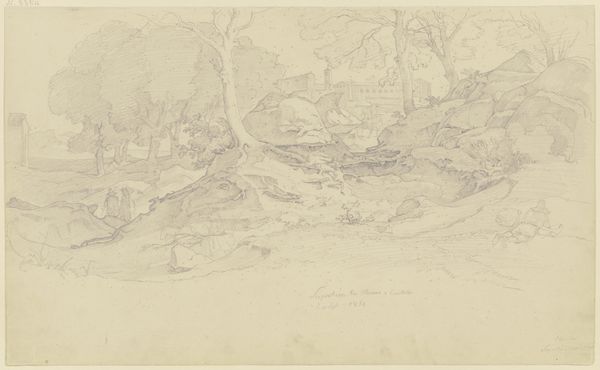
drawing, ink, pen
#
drawing
#
narrative-art
#
pen illustration
#
pen sketch
#
landscape
#
figuration
#
ink line art
#
ink
#
romanticism
#
pen
Dimensions: height 167 mm, width 205 mm
Copyright: Rijks Museum: Open Domain
Curator: What a wonderfully intricate ink drawing! This piece by Moritz Retzsch, from 1828, is entitled "Illustration for Goethe's Faust." Editor: It's incredibly delicate. It evokes a sense of ethereal tranquility...until you notice all the tiny figures swarming around the central character. They give off a strange feeling. Curator: Exactly! These ethereal beings hint at the drama of the narrative. In Goethe's Faust, temptation and inner turmoil are very much visually presented. Retzsch utilizes figuration here, positioning Faust as a man amidst nature but bombarded by...influences. Editor: It’s like a psychological landscape made literal. Are those meant to be demons? Fairies? Something else entirely? What were the dominant ideas in Faust interpretations at that point in history? I'd like to investigate the audience's perception then compared to modern views of it. Curator: Their ambiguity is the key! Retzsch relies on Romantic conventions. They evoke the spirits and the power of the unconscious. The figures aren't explicitly demonic or angelic, allowing for various interpretations— reflecting the complex nature of Faust's struggle. Editor: Interesting that he set this intense moment in such an otherwise calm natural landscape. The detailed forest provides a striking backdrop to such an intimate internal crisis, especially when social or domestic settings might feel more intuitive in reflecting societal expectations placed on Faust, the man. Curator: Yes, this reflects the broader cultural understanding of nature at that time: not merely as a physical space, but also as a reflection of inner life and deeper forces. Remember the power of the natural world, and of emotional intensity, that mark the Romantic art movement, for instance. Editor: Seeing how popular Faust has remained, I do believe examining this image today can spark thought in contemporary culture about human longing. Curator: Retzsch gives visual form to inner battles that remain universally relevant. Editor: I will look for any similar themes reflected in popular media like comics, video games or TV shows. I wonder if the symbolism endures.
Comments
No comments
Be the first to comment and join the conversation on the ultimate creative platform.
